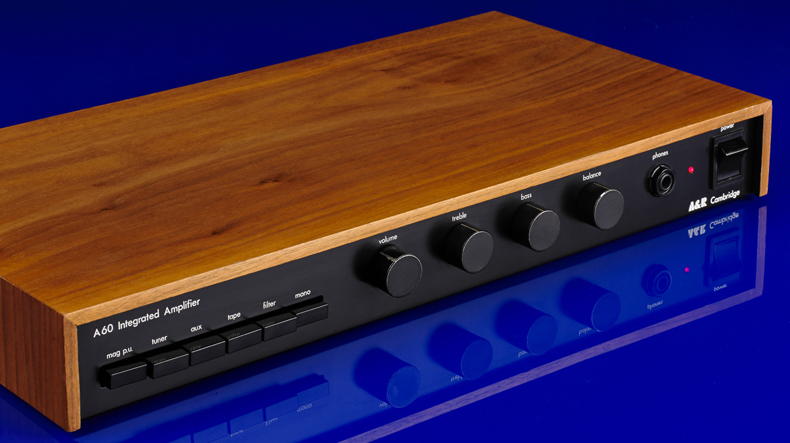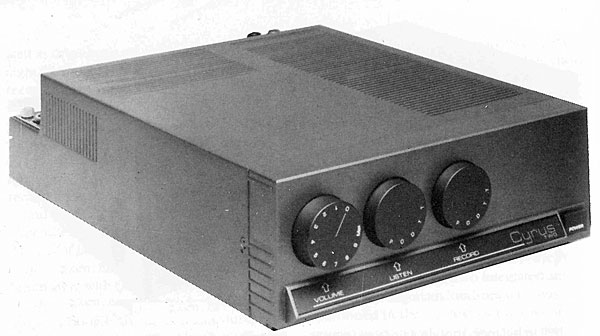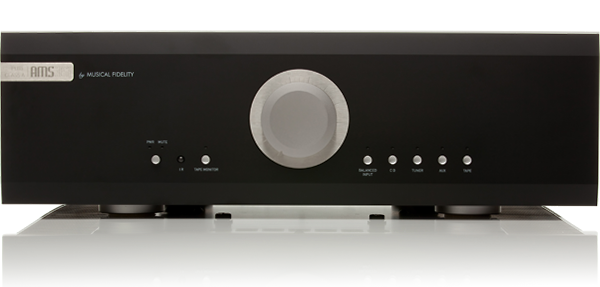The famous 845 power triode began life as a radio transmitting vacuum tube, with a physically huge anode dissipation of 75 watts and an anode voltage of 1,250V. Because the thoriated tungsten filament – which shined like a lightbulb – was powered at 10 Volts and 3.25 Amps, any transmitter running a large number of them would always lower the lights! The 845 went on to manufacture superb audio tubes and has become something of a cult in hi-fi amplifiers as well.
Icon Audio’s Stereo 845PP, which retailed for £5,995, was no shy, retiring violet of a valve amp; rather, in tube terms, it’s the apocalypse’s stormtrooper, running in push-pull mode to deliver a reported 38W RMS per channel. Many smaller valve amplifiers use self-biasing, which uses resistors to adjust the cathode voltage accurately, but the 845 valve’s size necessitates four resistors, each squandering roughly 20W of power, resulting in a lot of lost power and heat. That’s why Icon Audio included a bias meter, which allows customers to manually tune the biassing while also alerting them if a valve is going to fail – something a self-biasing system won’t tell you about. Valve types who have been around for a while will know that this is the way to go.
The ST845 follows Icon Audio’s general best practice, which includes a solid steel chassis (440x400x240mm and 35kg) into which top quality low distortion, tertiary wound output transformers are mounted, and these are potted to decrease noise. High-quality passive components, such as Solen/SCR capacitors and Jensen copper foils, are employed throughout. Internal wiring is silver plated copper (all hand connected, point-to-point), with an ALPS volume control sourced from Japan. Two 6SL7 first stage valves and two 6SN7 output driver valves, as well as a GZ34 driver stage rectifier, are employed in addition to the four Psvane 845 valves. There are two independent 10v AC heater supplies, as well as a separate power supply for the driver circuit, which employs a valve rectifier and a separate choke.
The ST845 is undoubtedly well-built, but then again, for £6,000, it should be. Nonetheless, the finish, both tube and transistor, isn’t quite as excellent as some cheaper competitors. The Audio Research VSi60 or 75, whose prices the Icon Audio falls between, and the Musical Fidelity AMS35i, for example, appear to be swisher. The copper top plate on the Icon Audio amp is stunning, and copper isn’t cheap these days, but some of the black powder coated steel casing parts, as well as the front panel switchgear, aren’t.
Valve amplifiers are often sensitive to the loudspeakers they’re connected to, but the Icon Audio ST845 PP looked significantly more secure. It is one of the few loudspeakers I’ve heard over the years that sounds genuinely powerful and gutsy, and it shows little fear of any loudspeakers I throw at it. Those expecting it to be as transparent as a transistor amplifier should hold their breath, as it is very colored. This is a bold and characterful amplifier that stamps its sonic personality all over the music, much like a giant striding over your front lawn.
It’ll come as no surprise that the ST845 has a warm tone, yet it’s never gloopy and syrupy, with a bass that sounds like it’s strolling through treacle. Instead, the huge Icon Audio is quick and nimble, but it still has a big thump down south, making it sound like a JCB. In a well-balanced system, it’s solid yet unexpectedly light; it’s pleasingly opulent but never sounds overbearing. The wandering bassline on Black Uhuru’s Party Next Door, for example, was a joy to listen to. The ST845 doesn’t lose much warmth as it moves up to the midband, though it does dry out significantly. Everything takes on a beautiful, rosy glow, making records that you might have thought were a touch caustic before – like The Bodines’ Scar Tissue – seem to quiet down and ease out. The music is never laser-etched out in front of you; instead, you’re lured into a broad and deep soundstage, with much of the action taking place beyond the plane of the speakers. Things take a step back, yet this amplifier is so big that you still feel completely immersed in the events.
Whatever genre of music you enjoy, it’s a great sound. Even the most awkward human voices, such as Bob Dylan’s, are given a stunning clarity and ease by it. Highway 61 Revisited was a lot less obnoxious than you’d expect. There’s no denying that the 845 is an excellent power valve for driving your speaker cones; it’s so clean yet warm in a way that few other valves can match. Yes, it’s colored, but it’s lot more resolute and detailed sounding than cheaper tubes, and it doesn’t turn the music into some sort of aural comfort blanket. It has more warmth and guts than a 300B, but a KT88-like get-up-and-go; in other words, it’s a match made in heaven!
Treble is a wonderful sound. Cymbals played over even a high-end Class A solid-state amp like the Musical Fidelity AMS35i sound a little steely and scratchy. They also don’t time as well; on lesser amps, the filigree hi-hat work on Rush’s Subdivisions sounds more like it’s being played on a drum machine, but the ST845 PP seems to compliment both Neil Peart’s enormous drum kit and his performance. In reality, the large Icon Audio offers a light, airy sound that never seems to get hot. No matter how complicated the music becomes, it simply shrugs it off and continues to play.
In nearly any British living room, it demonstrates grace under pressure even at high volumes, yet ask it to power the school disco and it loses its elegant demeanor pretty quickly. It sounds powerful and assured at quite high volumes in a large room with medium sensitivity speakers – it’s simply that you can’t push it as far as a solid-state. That color is also something that never leaves you. It’s nice, but if we’re being honest, it shouldn’t be there because it reduces the amp’s ability to distinguish different recordings and even instruments. The Memphis studio where Stax recorded its legendary soul collection sounds eerily similar to, say, The Power Station in New York. Some solid-state purists will find the bass a little slurred as well; it’s beautiful, but it doesn’t turn on and off as quickly as an LED.
This is a magnificent product that gives its owner luxury and a sense of occasion. It exudes personality and charm, producing a sound that no other amplifier can match. However, don’t expect it to be the last word in terms of transparency, subtlety, speed, or clarity; others do a better job in these areas. Still, most Icon Audio ST845 PP owners won’t mind; they’ll be more interested in what it does best, which is provide some of the most opulent sounds available.






